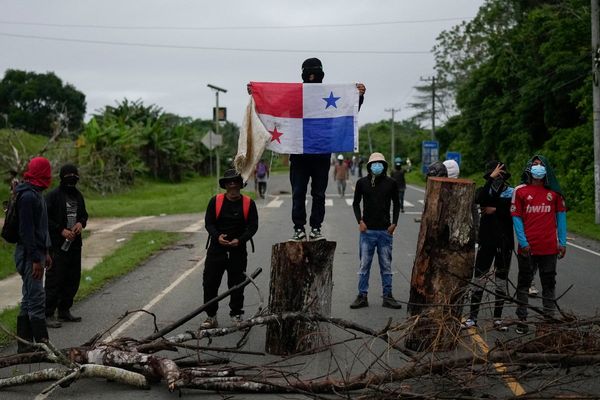
Abandoned central government flats in Sarojini Nagar are now occupied — not by government employees or anyone authorised by the government, but by squatters.
“The flats are not locked. Just get your luggage. No one has stopped us,” said Sukhdev (who goes by his first name), who is living in one of the flats with three others.
Another occupant, a woman in her mid-forties who refused to give her name, said that the only challenge is lack of electricity and water. “It is a little inconvenient but when you are getting to live in such a prime locality, connected with metro and bus services, and that too for free, it is a small price to pay,” she added.
Her family of six moved into a two-bedroom flat from the Kanak Durga slum cluster in RK Puram Sector-12 a month ago. Her husband is a vendor at the Babu Market in Sarojini Nagar and moving nearer his workplace was a convenient option.
“We have a house at KD Colony and whenever these houses have to be pulled down we will move out,” she said.
In 2017, central government employees vacated the flats -- there are over 15,000 in total --- after it was announced that they would be redeveloped into high-rise housing for them and others. Sarojini Nagar is one of seven neighbourhoods in south Delhi selected for the redevelopment and last year, as first reported by Hindustan Times, the government had approved the felling of at least 14,000 trees for the purpose.
The trees proved to be the plan’s undoing, though, and after Hindustan Times first broke details of just how many would be felled, activists and environmental groups approached the courts. In June last year, the Delhi high court stayed construction in all seven neighbourhoods — Sarojini Nagar, Netaji Nagar, Nauroji Nagar, Thyagaraja Nagar, Mohammadpur, Kasturba Nagar and Sriniwaspuri. While the stay on all neighbourhoods, except Nauroji Nagar, was later lifted, construction has been delayed with permissions from the Delhi and central governments needing to be sought afresh.
“With no one living here, it became a great option for those who wanted a roof over their head,” said a shopkeeper in Sarojini Nagar who asked not to be named.
On a recent March day, inside the colony which is supposed to be abandoned, women chatted as they bought groceries, children played, and residents parked their cars (yes, some of the squatters have them) close to the neighbourhood park.
Battery powered fans and emergency lights have been brought in and water is sourced from water tankers that visit the market area.
Street vendors in the area too seem to have taken a room or two to serve as the storehouse for their wares.
“The mink blanket stock needs to be rolled back now that winter is over. We have kept these here as a stopgap arrangement,” said Dhirendra Nautiyal, one such street vendor.
Several flats at Netaji Nagar too are occupied, but by central government employees, who were allotted Type-1 (one room, kitchen ) apartments elsewhere and refused to vacate the colony. This despite the houses around them being demolished.
Mahadevi Sapodiya, who lives near the Netaji Nagar post office with her family of five, agreed that it is a safety concern but this is the most convenient location for them and they do not want to move.
“There are only about 10 families living in this entire colony now. Things have changed, it is lonely but we have no other option,” Sapodiya added
Anoop Kumar Mittal, chairperson and managing director of NBCC (India) Limited, the developer of the project, said that the high court’s stay order was the primary factor behind the squatting.
“Our teams have filed several police complaints to vacate these quarters,” he said.
Senior officials in-charge of the project said that they have tried every trick in the book (and then some) to move the people. In some flats, doors and windows have been removed to encourage the people to move out.
“Demolition is the only way to get these people to move out. We remove them from one house and they start living in another. The break in the work has caused us several problems,” an NBCC official said on condition of anonymity.
First Published: Mar 24, 2019 08:01 IST







